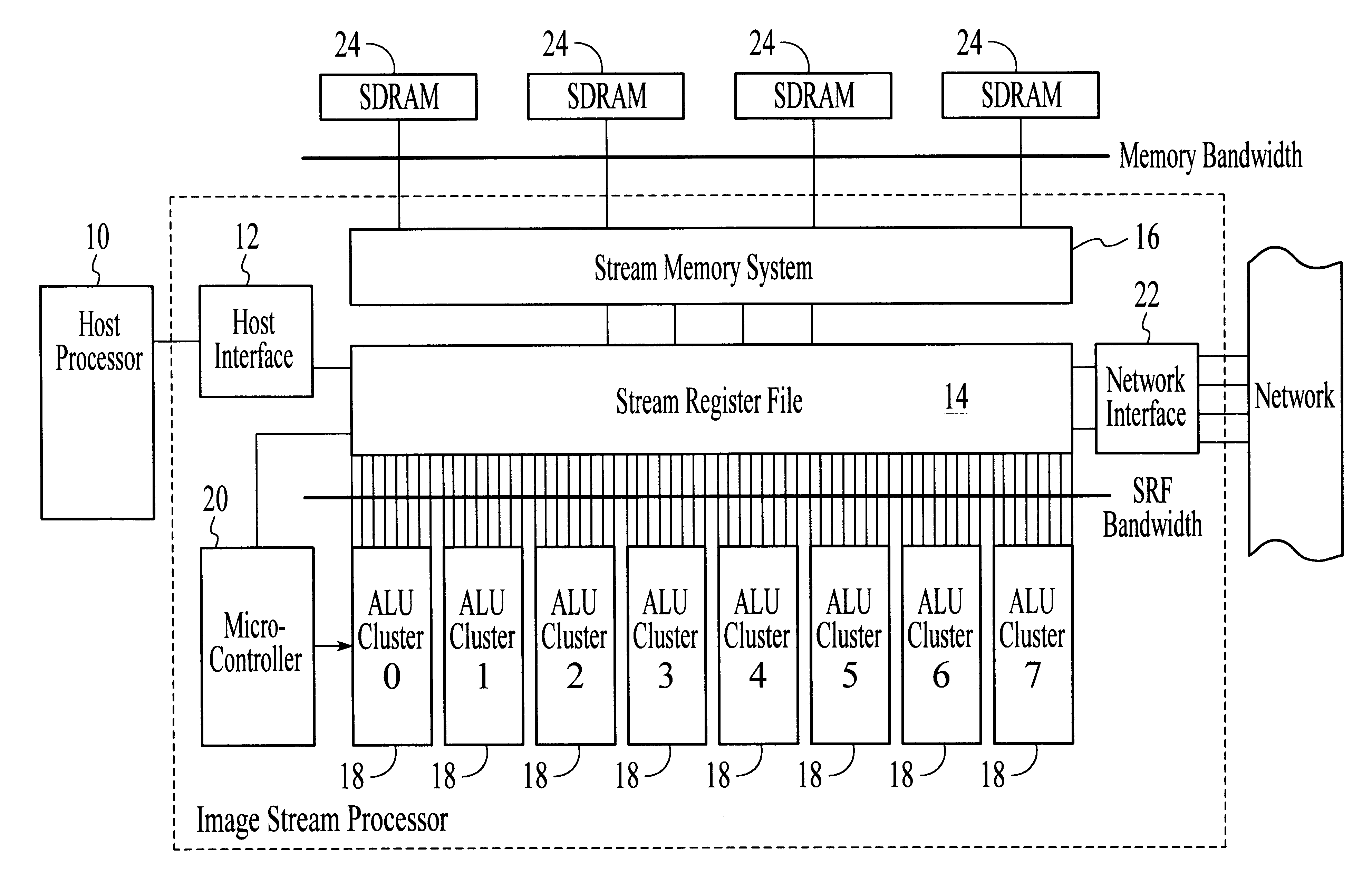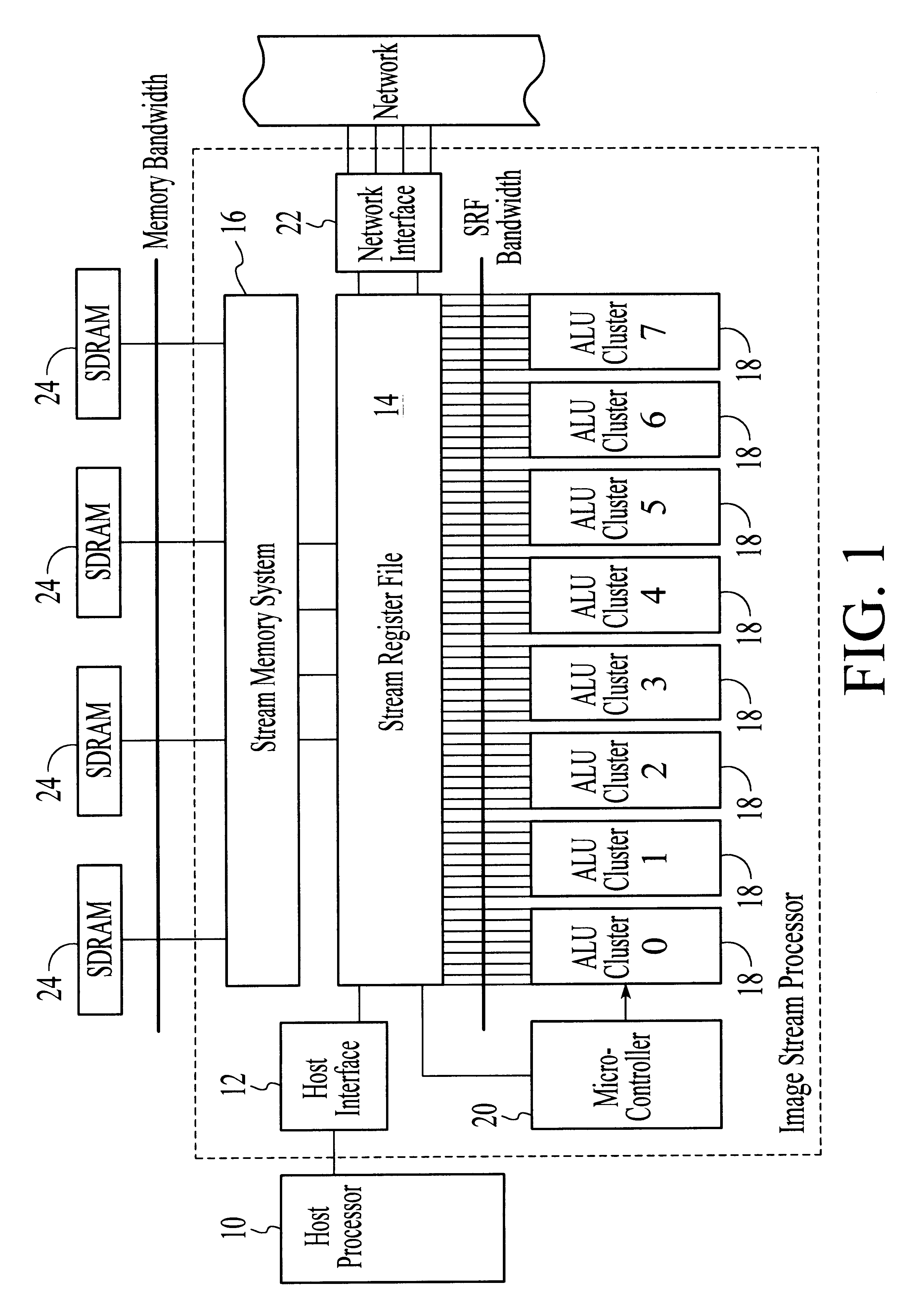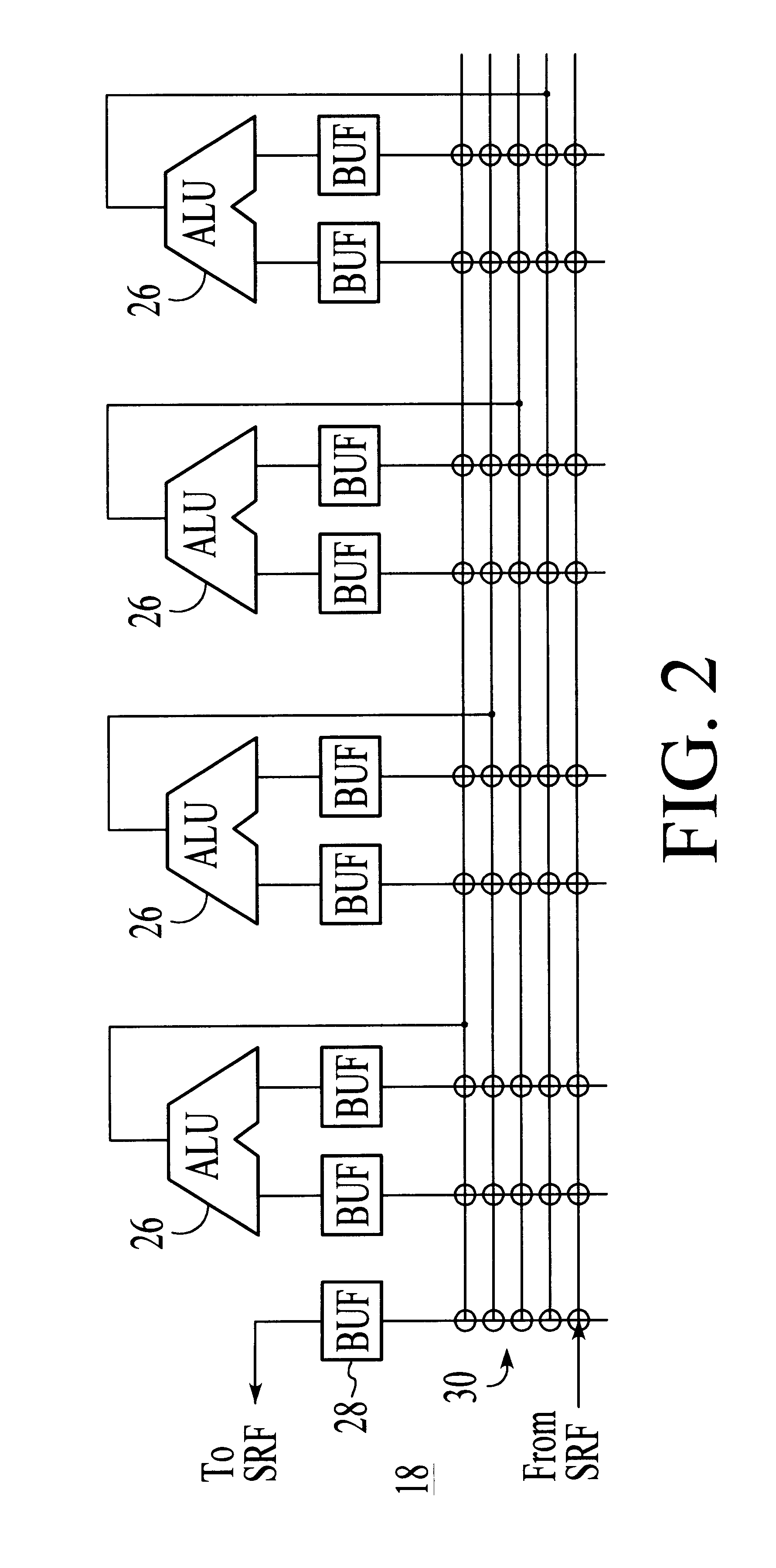System and method for performing compound vector operations
a compound vector and operation technology, applied in the field of computer architectures, can solve the problems unable to provide adequate instruction and data bandwidth, and challenging the problem of providing instruction and data bandwidth at each level of the memory hierarchy, particularly the bottom, to achieve the effect of reducing the demand for data bandwidth
- Summary
- Abstract
- Description
- Claims
- Application Information
AI Technical Summary
Benefits of technology
Problems solved by technology
Method used
Image
Examples
Embodiment Construction
First, the overall architecture of an exemplary computer system employing a preferred embodiment of the present invention will be described.
Central to the operation of this preferred embodiment are the concepts of streams and kernels. A stream is a sequence of elements made up of a collection of related data words. A stream may be received by a computation kernel which executes the same operation on all of the elements in the stream to produce another stream that can be output or sent to other kernels for further processing.
Kernels are relatively small computational units that may only access local variables, read input streams and write to output streams. They cannot make arbitrary memory references. In a preferred embodiment of the invention, the computation kernels are expressed in a C-like programming language and compiled into microcode programs that sequence the operation of arithmetic clusters to carry out compound stream operations on each element in a stream. The operations...
PUM
 Login to View More
Login to View More Abstract
Description
Claims
Application Information
 Login to View More
Login to View More - R&D
- Intellectual Property
- Life Sciences
- Materials
- Tech Scout
- Unparalleled Data Quality
- Higher Quality Content
- 60% Fewer Hallucinations
Browse by: Latest US Patents, China's latest patents, Technical Efficacy Thesaurus, Application Domain, Technology Topic, Popular Technical Reports.
© 2025 PatSnap. All rights reserved.Legal|Privacy policy|Modern Slavery Act Transparency Statement|Sitemap|About US| Contact US: help@patsnap.com



